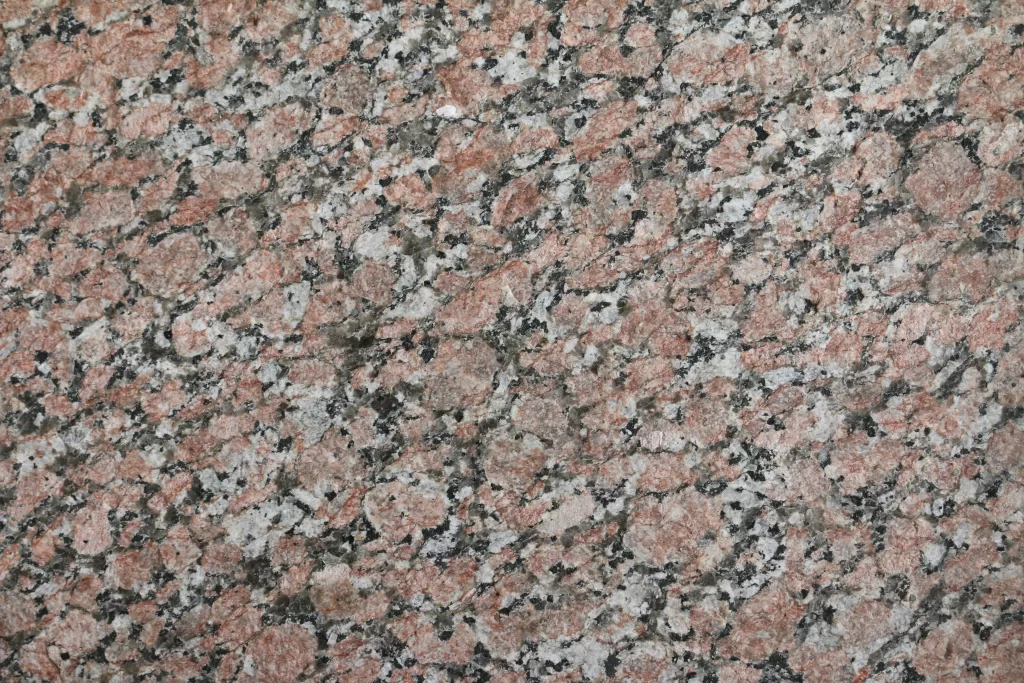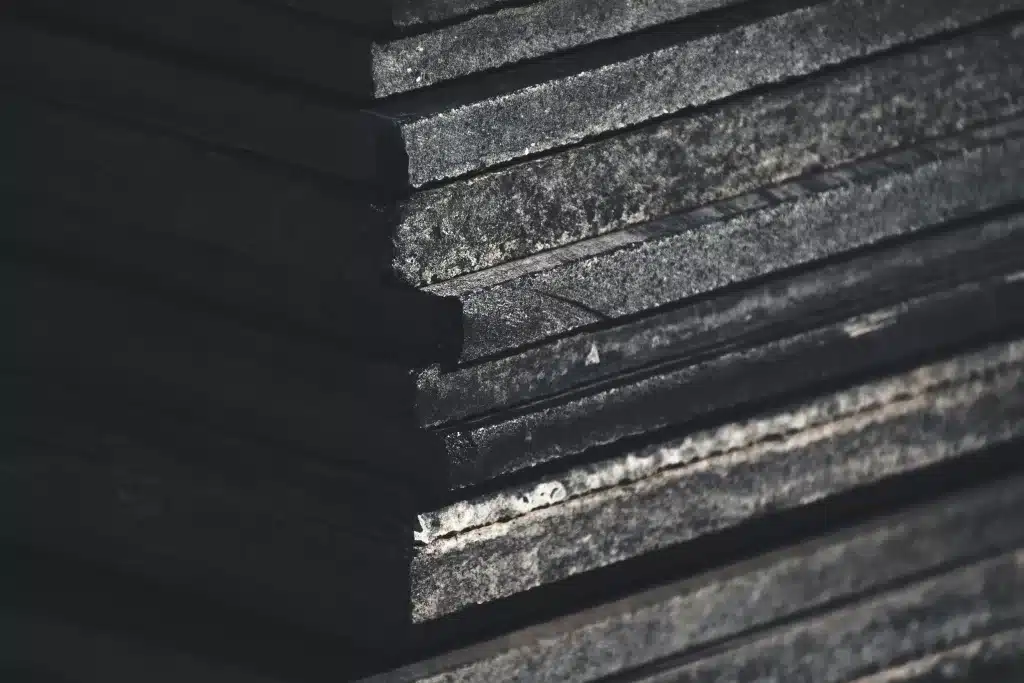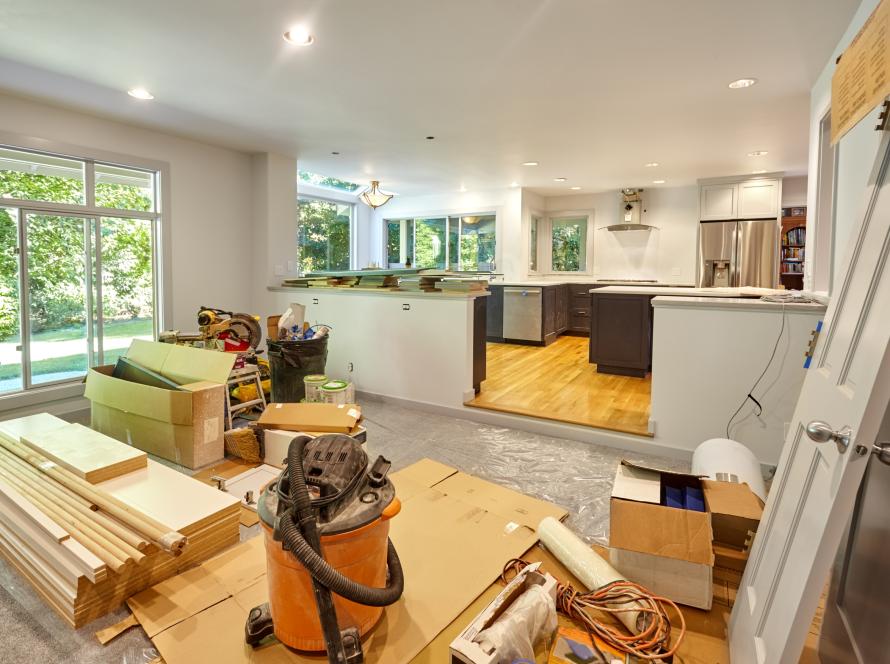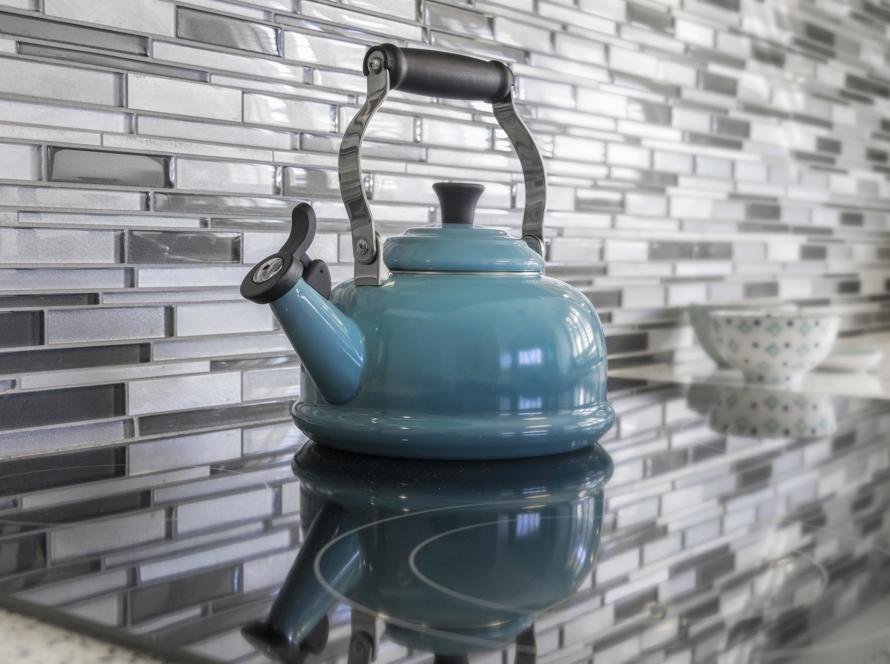Granite countertops have been a major American obsession since the late ’90s. Walk into any kitchen, and there’s a good chance you’ll find the unique veining of a granite countertop. Thanks to the high demand, these counters take up over 38% of the market share, which is why you’ll find plenty of real estate listings boasting about any granite counters on the property!
Despite their huge popularity, these counters aren’t the only – or even the best! – option for your kitchen or bathroom.
With plenty of granite countertop alternatives in a huge range of styles, shades, and finishes, there’s no reason not to choose a unique material that better fits your preferences.
If you’re ready to venture away from the mass fixation on granite, here are a few of the best alternatives to consider.

Quartz Countertops
Quartz counters are a fast-growing alternative to granite. These engineered stone options are compressed composites of multiple stones and resins or polymers. The result is a beautiful, natural-looking countertop with stunning hues and patterns.
Benefits of Quartz
Thanks to its range of hues, quartz is easy to customize! No matter your preferred design, you can find the perfect option for any kitchen or bathroom remodeling aesthetic.
Quartz also stands out for its durability. These counters are hard to chip, stain, scratch, or crack. This makes them an investment that can stand the test of time with proper care.
You’ll also benefit from lengthy manufacturer’s warranties: most sellers won’t have any qualms about backing the long lifespan of this type of stone.
Drawbacks of Quartz
One thing you might not like is quartz’s susceptibility to heat damage.
As a natural stone, quartz is resistant to heat. The resin that holds quartz countertops together, however, is not. This can cause quartz countertops to warp or melt if you place hot cookware right on the surface, so you’ll need to be mindful to avoid accidental damage.
In addition, quartz is also susceptible to sun damage. This makes it a poor choice for outdoor kitchens, and it’s also not ideal if your indoor counters get direct sunlight for part of the day.
Marble Countertops
Marble countertops are a classic choice for any kitchen or bathroom. The timeless patterns and elegant veining come in beautiful colors, styles, and finishes to create a natural, one-of-a-kind surface.
Benefits of Marble
Elegance is effortless with a marble counter. There’s nothing quite like the rich look of this natural stone and its endless variations, which can make choosing it a smart move if you want a unique look for your counter.
If you want this stone for a kitchen counter, you’re in luck: marble is a naturally cool stone, which makes it ideal when you’re setting warm (but not hot!) foods down after baking or cooking.
In the long term, marble can last a hundred years or more. This makes it a smart investment if you’re hoping to avoid replacing your counters for years to come!
If a home sale is on the horizon, on the other hand, marble may help you increase your property’s price tag. These counters are in high demand, which can create a perceived sense of luxury around your kitchen. Like granite, marble counters are an upgrade worth boasting about in your listing!
Drawbacks of Marble
Unlike some of the other materials on this list, marble is not scratch-resistant. It’s soft enough that light scratches, wear, and water spots may appear over time. Don’t give up on it yet, though: with proper care, you can avoid this, and you can even buff out smaller scratches.
Porousness is another issue. Liquids can stain marble, which is why you’ll need to clean spills right away, especially with acidic liquids like wine, citrus, or tomato juice. Regular annual sealing can help you keep these discolorations at bay.
Last, if you want a cheaper alternative to granite, look elsewhere! Marble often costs just as much, if not more than, granite counters. You can sometimes find more affordable options, but be sure to do your homework to avoid low-quality materials and finishes.
Slate Countertops
In today’s modern home, slate has become a huge trend – both in terms of the color itself and the material! Slate is a fine-grained stone that forms when many layers of rock and sediment compress together. The unique and stylish look of this can inject a lot of visual appeal into your kitchen or bathroom design, creating a sleek, uniform appearance in the heart of the space.
Benefits of Slate
First, let’s talk about the price tag: slate is one of the most affordable countertop materials, especially if you’re looking for a natural material instead of an engineered product like laminate. Costing around $20-60 per square foot, it’s perfect for renovations on a budget.
Slate’s hardness and durability make it difficult to scratch or dent, and hot cookware won’t damage the surface. Because it’s non-porous, it won’t absorb liquids or stain, which makes cleaning much a breeze.
Drawbacks of Slate
This natural stone doesn’t come in nearly as many color variations as you’d get with other options on this list. Most of what you’ll find will be darker greys, blacks, blues, and greens, though you can also find rarer browns or reds. Beautiful highlights of green and blue are also common in the darker shades.
The corners of slate countertops can sometimes be brittle, which is why experts often recommend rounding the edges.
Stainless Steel Countertops
A staple in commercial kitchens nationwide, stainless steel is becoming a more popular choice with homeowners as well. The sleek look of these counters stands out from the crowd, though it still pairs well with both classic and modern home designs.
Benefits of Stainless Steel
If you need a high-performing countertop, look no further! There’s a reason stainless steel is the go-to choice in industrial buildings.
Stainless steel is durable and low-maintenance, with high-end options lasting 20 years or more. Though these counters can get scratched, it’s easy to buff and polish them. With the application of metal sealants, you can even help prevent future scratches.
Cleaning is easy, and as the word “stainless” in the name suggests, these counters are stain-resistant. In addition, these counters don’t burn under a hot pot, nor do they rust with moisture.
Installation is a breeze, unlike with some natural stone countertops. This means your contractor may be able to offer faster and more affordable installation over similar choices.
If you’re looking for a sustainable option, you might be surprised to learn stainless steel is 100% recyclable. This can help you reduce the long-term carbon footprint of your kitchen renovation or remodel.
Drawbacks of Stainless Steel
Again, scratches, dings, and dents are concerns you should have about these counters. You’ll need to be careful about scraping metal cookware or cutlery across the surface. You can avoid this risk with higher-gauge steel, though this will come at a higher price point.
Soapstone Countertops
Like slate, soapstone is a darker natural stone that comes in striking shades for a chic and sophisticated touch. Though not for everyone, its unique, rustic patina adds extra beauty to any modern kitchen or bathroom.
Benefits of Soapstone
Thanks to its sleek, non-porous surface, soapstone is resistant to staining, even with acidic liquids. It’s also heat resistant, allowing you to place warm or even hot cookware right on the counter.
In addition, soapstone is perhaps the most eco-friendly option on this list. Not only is it a natural material, but it’s chemical-free and easy to recycle. You can even find salvaged soapstone counters online, often at a discount!
An extra benefit is bacteria resistance, which makes soapstone a hygienic option for busy kitchens where cross-contamination is a concern.
Drawbacks of Soapstone
Like marble, soapstone is a softer stone. This makes it more prone to scratches, wear, and dents, though it isn’t prone to cracking like granite is. Resurfacing can help bring your counter back to pristine condition as needed.
Regular maintenance is a must if you want to help soapstone keep its natural look. Periodic oiling helps, and it doesn’t take long.
Last, you’ll have fewer color options with soapstone than you would with other natural stone options. Gray is the most common shade, often with blue or green tones, though you can also find lighter soapstone. Buyer beware: lighter soapstone sometimes contains talc, which can increase its softness.

Try These Granite Countertop Alternatives

Compare Quotes from Top-rated Kitchen Remodel contractors in your area.
No matter your preferred style or budget, the granite countertop alternatives above are great ways to add a one-of-a-kind feature to your home. From the sleek look of stainless steel to the classic veining of marble, you’re sure to find a countertop material to meet your needs when you weigh these options.
If you’re struggling to find the right countertop or a contractor to install it, connect with Alpha Living!
Our network of experienced remodeling pros can guide you to the best options and provide an expert installation. Plus, you can get multiple estimates from the comfort of your own home. Enter your zip code to get started.





Facebook
Comments